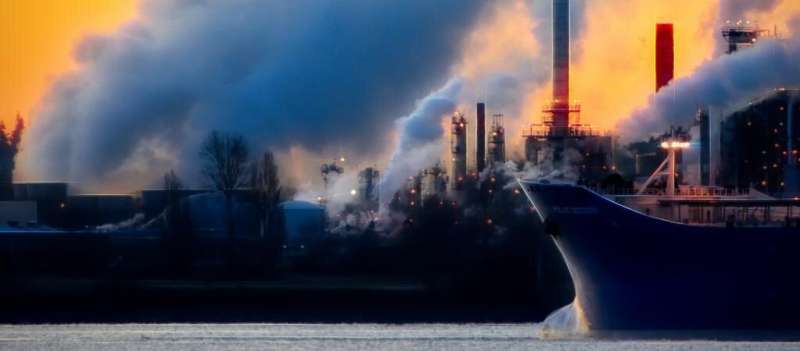
The White House is betting big on these emerging technologies to limit global warming and combat climate change. Here, two professors in UC Riverside's Marlan and Rosemary Bourns College of Engineering explain how carbon capture works, current limitations, and the commercial uses for recovered carbon.
Mihri Ozkan, a professor of electrical and computer engineering and UCR's Climate Action Campion Professor, is developing clean energy technologies. Her most recent work focuses on direct air capture of carbon dioxide and advanced batteries for the smart grid and electric vehicles.
Kandis Leslie Abdul-Aziz is an assistant professor of chemical and environmental engineering whose research focuses on creating a circular economy by converting waste products, including recovered carbon, into fuels and valuable industrial chemicals.
What is direct air capture of carbon dioxide (CO2)?
Ozkan: Carbon capture works by separating CO2 from exhaust gases emitted from coal powered plants and other industrial factory exhausts or directly from the atmosphere.
How does direct air capture, or DAC, technology work?
Ozkan: Currently, there are two methods. One method uses liquid solvent chemistry to capture CO2 as calcium carbonate. Another class of carbon capture material is solid sorbents— materials that absorb other materials—that are usually functionalized with amines or have natural affinities for CO2.
DAC plants use fans to collect and pass air through the sorbent. A second process separates the CO2 from the sorbent for disposal or recycling. The use of fans and subsequent regeneration steps are energy intensive. Depending on the power source used (solar, wind, geothermal etc.), this step is the costliest step of DAC technology.
How is captured CO2 converted into industrially useful products?
Abdul-Aziz: Carbon capture and utilization, or CCU, is the development of technologies that can capture CO2 directly from air or from flue gas and convert the captured CO2 into chemicals and fuels.
The most common strategies for carbon capture and utilization use either thermal conversion, electrochemical conversion, or photoconversion to transform captured CO2 into basic chemicals, fine chemicals, and polymers. There are a limited number of commercial processes, however, with the most notable being the production of urea using CO2 and ammonia.
What is your lab doing to improve carbon capture technology or utilization?
Abdul-Aziz: My laboratory develops technology for integrated CO2 capture and conversion, or ICCU, schemes where the heterogeneous catalysts (such as nickel, palladium, and copper nanoparticles) are coupled with a solid sorbent (zeolites, metal organic frameworks, metal oxides) to efficiently remove CO2 directly from air or flue gas and convert it to either renewable natural gas (methane) or ethane and ethylene. This new research is supported by a NSF CAREER Award.
Ozkan: I co-organized the Climate Change Mitigation Technologies Conference to discuss the status and advancements in DAC technologies at the Materials Research Society Fall Meeting in Boston last year. High level personnel from operational DAC plants attended this conference. I have also published several recent review papers and commentaries on DAC technologies and their feasibility.
What are some challenges that need to be overcome for carbon capture and utilization to realize its full potential?
Abdul-Aziz: CO2 is a thermally stable molecule that is also kinetically inert. In other words, it takes a significant amount of energy to activate the CO2 molecule to form building blocks for the desired products. Typically, the heterogeneous catalysts used have limited stability and durability. In order to become industrially viable, these catalysts must be stable for years—not days or weeks as is the case with current technology. Most CCU strategies begin by combining captured CO2 with renewable hydrogen from water electrolysis to make methanol and carbon monoxide. However, a particular challenge with this reaction is the low yields of more useful products that contain two or more carbon atoms, such as ethylene. Ethylene is used by the chemical industry as a primary building block for chemicals, paints, packaging, and fuels. Successful implementation of CCU to produce high yields of ethylene and other products with more than one carbon atom will improve the likelihood of industrial implementation and replace current processes that produce greenhouse gases.
Ozkan: The high energy demands of DAC technologies result in operational costs of about $200-600 per ton of CO2. DAC is economically viable when it costs less than $100 per ton of CO2. Improvements in all stages of the DAC process are needed to drive down the costs.
Is carbon capture able to reduce greenhouse gas emissions enough to slow or even halt climate change?
Abdul-Aziz: Strategies that combine carbon capture and utilization, or CCU, with carbon capture and storage, CCS, should be enough to reduce greenhouse gas emissions. The beauty of CCU is that this field is focusing on a net-zero emissions economy, where instead of using fossil fuels to make products for our societal needs, we will use CO2 as the primary building block for these materials.
Ozkan: Along with reducing overall carbon emissions, the removal of carbon that is already in the atmosphere is a major focus now, especially after the global discussions during the 2021 United Nations Climate Change Conference, or COP26. In the earlier Paris meeting, limiting global warming below 2 C, preferably to 1.5 C, compared to pre-industrial levels, was defined as the global goal. In order to meet this goal, all types of negative emission technologies need to put to work, including DAC.